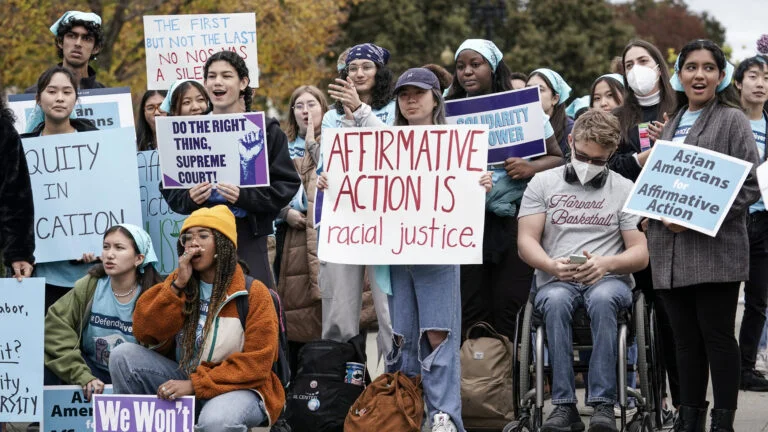
Introduction
In a significant ruling, the Supreme Court has recently struck down the use of affirmative action in college admissions, dealing a blow to efforts aimed at diversifying medical schools across the country. The decision has sparked a heated debate regarding the future of affirmative action and its impact on promoting equal opportunities and addressing historical disparities. This article delves into the details of the Supreme Court’s ruling, examines its implications for medical school admissions, and explores the potential consequences for diversity in the medical profession.
The Supreme Court’s Ruling on Affirmative Action
1.1 Background and Context
Affirmative action is a policy that aims to address historical imbalances and promote diversity by considering an applicant’s race or ethnicity as one factor among many in the college admissions process. Over the years, this policy has been implemented in various educational institutions, including medical schools, to increase representation from underrepresented minority groups.
1.2 Key Arguments
The Supreme Court’s ruling on affirmative action centers around the argument that considering an applicant’s race as a factor in college admissions violates the principle of equal protection under the law. Critics argue that affirmative action perpetuates reverse discrimination and undermines merit-based admissions processes, while proponents maintain that it is a necessary tool to redress past inequalities and foster a diverse learning environment.
1.3 Decision and Implications
In a closely divided decision, the Supreme Court ruled against the use of affirmative action in college admissions, including medical schools. The decision raises concerns about the potential impact on efforts to diversify medical schools and address existing disparities in healthcare access and outcomes. Medical schools will now have to find alternative strategies to promote diversity while adhering to the legal framework established by the Supreme Court.
Affirmative Action in Medical School Admissions
2.1 Importance of Diversity in Medical Education
Diversity in medical schools is crucial for several reasons. It enhances cultural competency among future healthcare professionals, improves patient care outcomes, and fosters innovation and creativity in addressing complex health issues. By exposing students to a diverse range of perspectives, experiences, and backgrounds, medical schools can better prepare future doctors to serve diverse patient populations effectively.
2.2 The Role of Affirmative Action
Affirmative action has played a vital role in increasing representation from underrepresented minority groups in medical schools. By considering race or ethnicity as a factor, medical schools have been able to identify talented individuals from diverse backgrounds who may have faced barriers to access quality education. This approach has helped create a more inclusive and representative medical workforce.
2.3 Successful Examples of Affirmative Action Programs
Several medical schools have implemented successful affirmative action programs, resulting in increased diversity among students and improved healthcare outcomes. These programs often include holistic admissions processes that consider an applicant’s socioeconomic background, personal experiences, and potential for contributing to the medical profession. Successful examples demonstrate that affirmative action can effectively address historical disparities in medical education.
Potential Consequences of the Ruling
3.1 Impact on Underrepresented Minority Students
The Supreme Court’s ruling may have a detrimental impact on underrepresented minority students aspiring to pursue a career in medicine. Without the consideration of race or ethnicity in admissions, these students may face additional barriers to accessing medical education. The ruling could potentially result in a less diverse medical profession, limiting the ability to provide culturally competent care and address health disparities effectively.
3.2 Challenges in Promoting Diversity
With the removal of affirmative action, medical schools face challenges in maintaining and promoting diversity. Finding alternative strategies to foster a diverse learning environment while ensuring fairness in admissions is crucial. Schools may need to implement innovative approaches, such as outreach programs, pipeline initiatives, and targeted scholarships, to attract and support students from underrepresented backgrounds.
3.3 Alternative Strategies for Diversity in Medical Schools
While affirmative action has been an effective strategy, its removal necessitates the exploration of alternative approaches. Medical schools can focus on implementing outreach programs that target underrepresented communities, expanding mentorship opportunities, and investing in support systems to enhance the success of diverse students. Additionally, schools can work towards addressing systemic barriers and biases that contribute to educational disparities.
Addressing Historical Disparities in Medical Education
4.1 Historical Context of Discrimination
To understand the importance of diversity and affirmative action in medical education, it is crucial to recognize the historical context of discrimination that has disadvantaged certain communities. Historical inequities, including limited access to quality education and healthcare, have contributed to disparities in healthcare outcomes and a lack of representation in the medical profession.
4.2 Importance of Addressing Disparities
Addressing disparities in medical education is essential for promoting social justice and improving healthcare outcomes for all populations. By increasing diversity in medical schools, we can work towards a healthcare system that better understands and addresses the needs of marginalized communities, reduces health disparities, and provides equitable access to quality care.
4.3 Long-Term Solutions for Equity in Medical Education
While affirmative action has been an effective tool in promoting diversity, achieving long-term equity in medical education requires comprehensive systemic changes. These changes include improving access to quality education in underprivileged communities, investing in mentorship programs for aspiring healthcare professionals, and addressing implicit biases and structural barriers within the education system. Creating an inclusive and equitable medical education environment benefits society as a whole.
Conclusion
The Supreme Court’s ruling striking down the use of affirmative action in college admissions, including medical schools, has raised concerns about the future of diversity in medical education. While the decision poses significant challenges, it is essential for medical schools to explore alternative strategies to promote diversity and address historical disparities. By investing in outreach programs, support systems, and addressing systemic barriers, medical schools can continue striving towards a healthcare system that is inclusive, equitable, and provides the highest quality care to all individuals.
FAQs (Frequently Asked Questions)
6.1 What is affirmative action?
Affirmative action is a policy that aims to address historical imbalances and promote diversity by considering an applicant’s race or ethnicity as one factor among many in the college admissions process.
6.2 Why is diversity important in medical schools?
Diversity in medical schools enhances cultural competency, improves patient care outcomes, and fosters innovation in addressing complex health issues.
6.3 How will the Supreme Court’s ruling impact minority representation in the medical profession?
The Supreme Court’s ruling may have a detrimental impact on minority representation in the medical profession by potentially limiting access to medical education for underrepresented students.
6.4 Are there alternative approaches to promoting diversity in medical schools?
Yes, alternative approaches include outreach programs, mentorship initiatives, and addressing systemic barriers to promote diversity in medical schools.
6.5 What can be done to address historical disparities in medical education?
Addressing historical disparities requires improving access to quality education in underprivileged communities, investing in mentorship programs, and addressing implicit biases and structural barriers in the education system.




